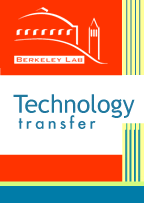|
ABSTRACT:
Alex Zettl and John Cumings have developed a novel,
reliable technique to systematically engineer the walls
and tips of multiwall carbon nanotubes. The method works
by the controlled peeling of individual outer carbon
layers of the nanotubes, thus producing nanotubes with
made-to-order diameter and tip geometries. This method
allows highly controlled shaping through electrically
driven vaporization of successive layers (i.e., tube
walls) of the multiwall nanotubes. Later, outer nanotube
layers are successively removed, leaving the core nanotube
walls intact and protruding from the bulk of the multiwall
nanotube.
This peeling and sharpening process can be repeatedly
applied to the same multiwall nanotube until the very
innermost, small diameter tube or tubes protrude —
often with a tip radius of curvature comparable to that
of a single-walled nanotube. Berkeley Lab's new method
has been demonstrated in a transmission electron microscope
(TEM) configured with a custom-built, mechanical/piezo
manipulation stage with electrical feedthroughs to the
sample. However, the method can be performed without
the aid of a TEM as well.
Carbon nanotubes, due to their unique mechanical and
electrical properties, are attractive candidates for
a host of applications, including: catalysts; biological
cell electrodes; nanoscale electronics; and scanned
probe microscope and electron field emission tips. For
many such applications, it is desirable to control or
shape nanotube geometry. For example, the ideal scanned
probe, field emission, or biological electrode tip would
be long, stiff, and tapered for optimal mechanical response,
and have an electrically conducting tip. Until now,
this finely controlled nanotube shaping has not been
possible. The ability to selectively shape the geometry
on individual multiwall nanotubes has numerous applications
in imaging (such as atomic force and scanning tunneling
microscopy), field emission tips, and biological sensor
and manipulation probes.
|



